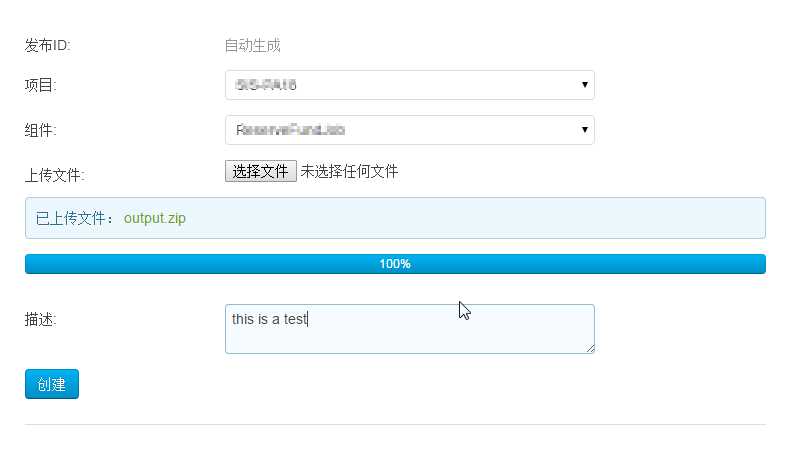标签:
以前作的上传,在糙了,所以在用户体验上改进一下。
同时,结合DJANGO作定位上传。
这其中分两步进行,第一次上传到TMP目录下,
第二次,将TMP下的文件转移到标准目录下。
form.py
file_path = forms.CharField( required=True, label=u"上传文件", widget=forms.TextInput( attrs={ ‘rows‘: 2, ‘class‘: ‘uk-width-1-2‘, } ), )
upload.html
{# file_path #} <div class="uk-form-row"> <div class="uk-form-label"> {{ form.file_path.label_tag }} {% for error in form.file_path.errors %} <span class="uk-badge uk-badge-danger">{{ error }}</span> {% endfor %} </div> <div id="upload-drop" > {# <i class="uk-icon-cloud-upload uk-icon-medium "></i> 将文件拖拽至此或者 #} <input id="upload-select" name="upload-select" type="file"> <input type="text" id="file_path" name="file_path" value="" hidden/> </div> <div id="progressbar" class="uk-progress uk-hidden"> <div class="uk-progress-bar" style="width: 0%;">0%</div> </div> </div> <script> $(function(){ var progressbar = $("#progressbar"), bar = progressbar.find(‘.uk-progress-bar‘), settings = { single: false, filelimit: 1, action: ‘/version/file_upload/‘, // upload url allow : ‘*.(war|zip)‘, // allow war and zip loadstart: function() { bar.css("width", "0%").text("0%"); progressbar.removeClass("uk-hidden"); }, progress: function(percent) { percent = Math.ceil(percent); bar.css("width", percent+"%").text(percent+"%"); }, allcomplete: function(response) { uploadfilename = response.replace(/\"/g,"") bar.css("width", "100%").text("100%"); $("#upload-select").after("<div class=‘uk-alert‘ data-uk-alert> 已上传文件: <span class=‘uk-text-success‘>" + uploadfilename + "</span></div>"); $("#file_path").attr("value", uploadfilename); } }; var select = UIkit.uploadSelect($("#upload-select"), settings), drop = UIkit.uploadDrop($("#upload-drop"), settings); }); </script>
views.py
def fileupload(request): files = request.FILES.getlist(‘files[]‘) file_name_list = [] for f in files: destination = ‘d:/temp/‘ # windows # destination = ‘/tmp/‘ # linux if not os.path.exists(destination): os.makedirs(destination) with open(destination+f.name, ‘wb+‘) as destination: for chunk in f.chunks(): destination.write(chunk) file_name_list.append(f.name) return render_to_json_response(‘,‘.join(file_name_list))
然后,在作总体提交时,就可以用file_path = form.cleaned_data[‘file_path‘]取出第二次送到后端的文件名称了。
看:

DJANGO和UIKIT结合,作一个有进度条的无刷新上传功能
标签:
原文地址:http://www.cnblogs.com/aguncn/p/5157281.html